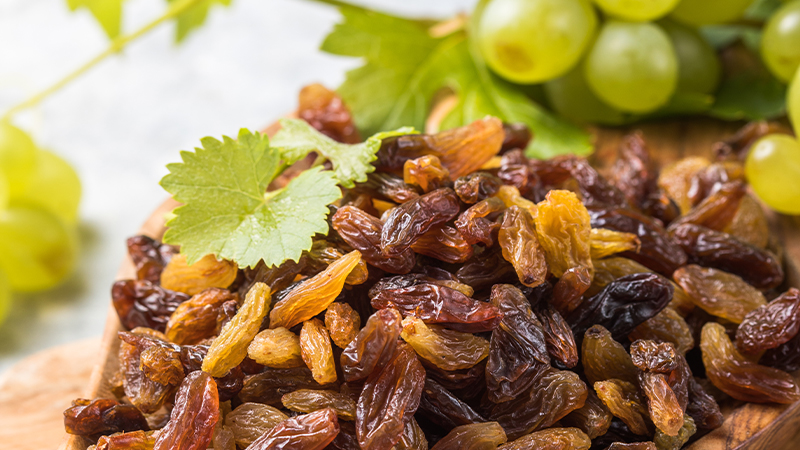
Global Raisin Supply Squeezed by Pandemic, Energy Crisis and Trade Tensions, Reshaping Markets


The global raisins market is experiencing significant changes due to the impact of various factors like adverse weather conditions, logistics challenges, and global trade tensions.
According to Beroe research, the global raisins market is estimated to be valued at around $2.62 billion in 2022, and it is expected to grow at a CAGR of about 4.6% between 2022 to 2026.
One of the major challenges faced by the raisins industry is the adverse weather conditions in major growing regions, which have led to a drop in production. Additionally, logistical challenges like container shortages, trade tensions, and Europe's energy crisis have further disrupted the supply landscape, with emerging markets like Chile, Uzbekistan, and South Africa competing with conventional markets like China, the USA, Turkey, and Iran.
The U.S., which used to account for nearly 50% of the global raisin market, currently only accounts for about 20 percent due to dwindling supplies. Climate change is having a direct impact on output and quality of sultanas during the drying periods, increasing the risk of raisin growers uprooting their vineyards and cultivating other products like cotton or olives to increase their returns. This further supports the evolving supply landscape for raisins in the coming years.
The UK, which is one of the leading raisins importing markets, is experiencing a shortage of raisins, sultanas, and currants, with prices rising by nearly 42% since September 2022. This has been attributed to the falling numbers of raisins in California, pushing up prices. The frost damages that occurred in 2020 lowered the US raisins output by nearly 50% from the previous year, tightening supplies considerably.
The rising inflation globally is anticipated to dampen European demand for raisins. Also, a rise in Turkish raisin production will lead to strong competition in Europe. However, due to the low-quality raisins of this year, as unstable weather conditions have had a bad effect on the quality of the sultanas in Turkey.
Despite the challenges, the rise of new supplying markets for raisins is bringing new opportunities. Owing to the fall in supplies in Chinese raisins, the domestic raisins stock is less price competitive for buyers even in the Chinese market, causing the country to import raisins. The trade tensions between China and the USA have led China to look at alternate supply markets like Uzbekistan and Chile.
In conclusion, the raisins supply is primarily dependent on the grape production in the region. In many major grape growing regions, the grape production estimates have been projected downward due to parameters like drought, unfavorable rains, and reducing vineyard acreage owing to poor returns, increasing production costs causing farmers to switch to high return crops, etc. The industry stakeholders are closely monitoring the situation and are taking strategic steps to ensure a secure supply chain for raisins.
Related Insights:
View All
Get more stories like this
Subscirbe for more news,updates and insights from Beroe






